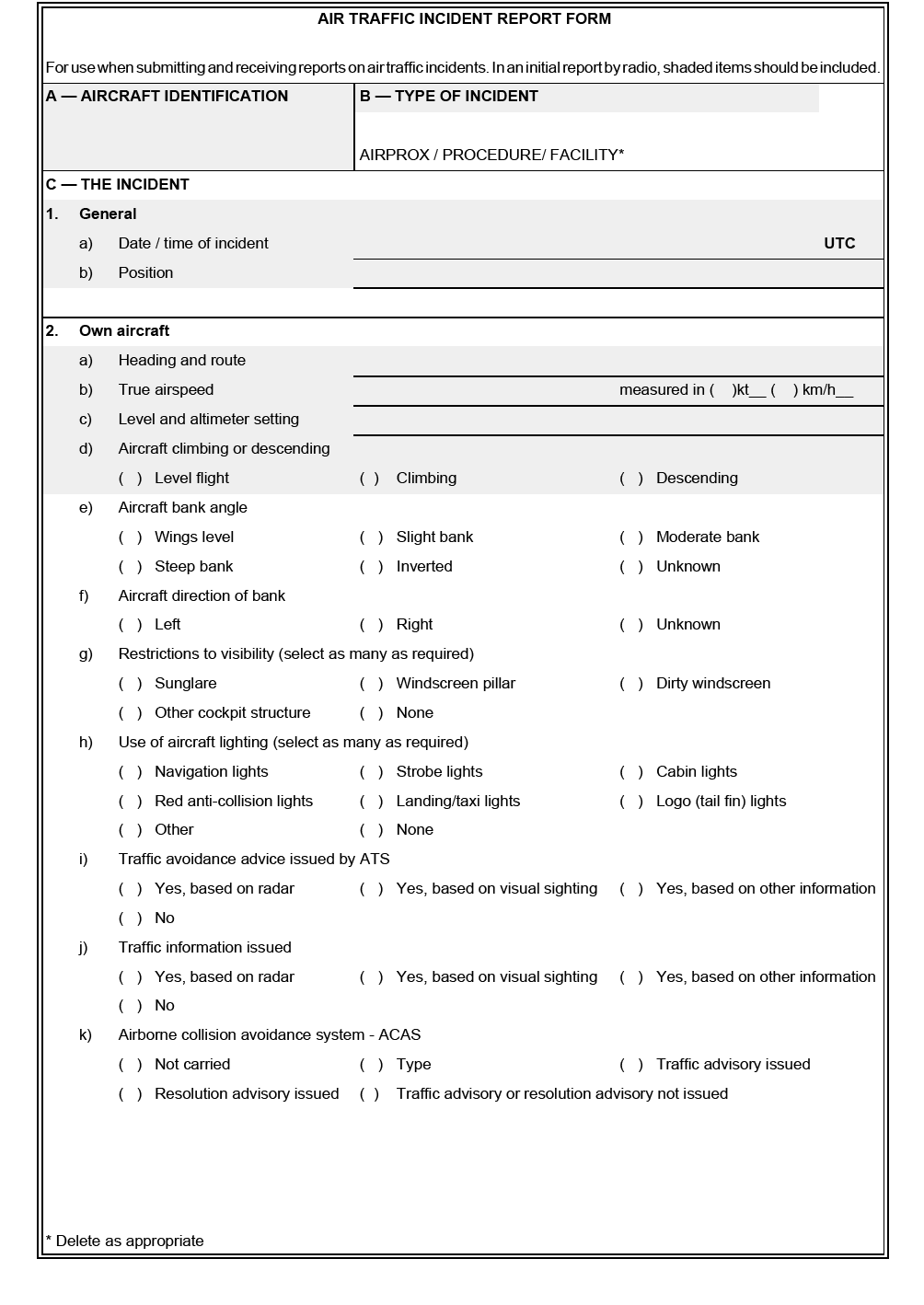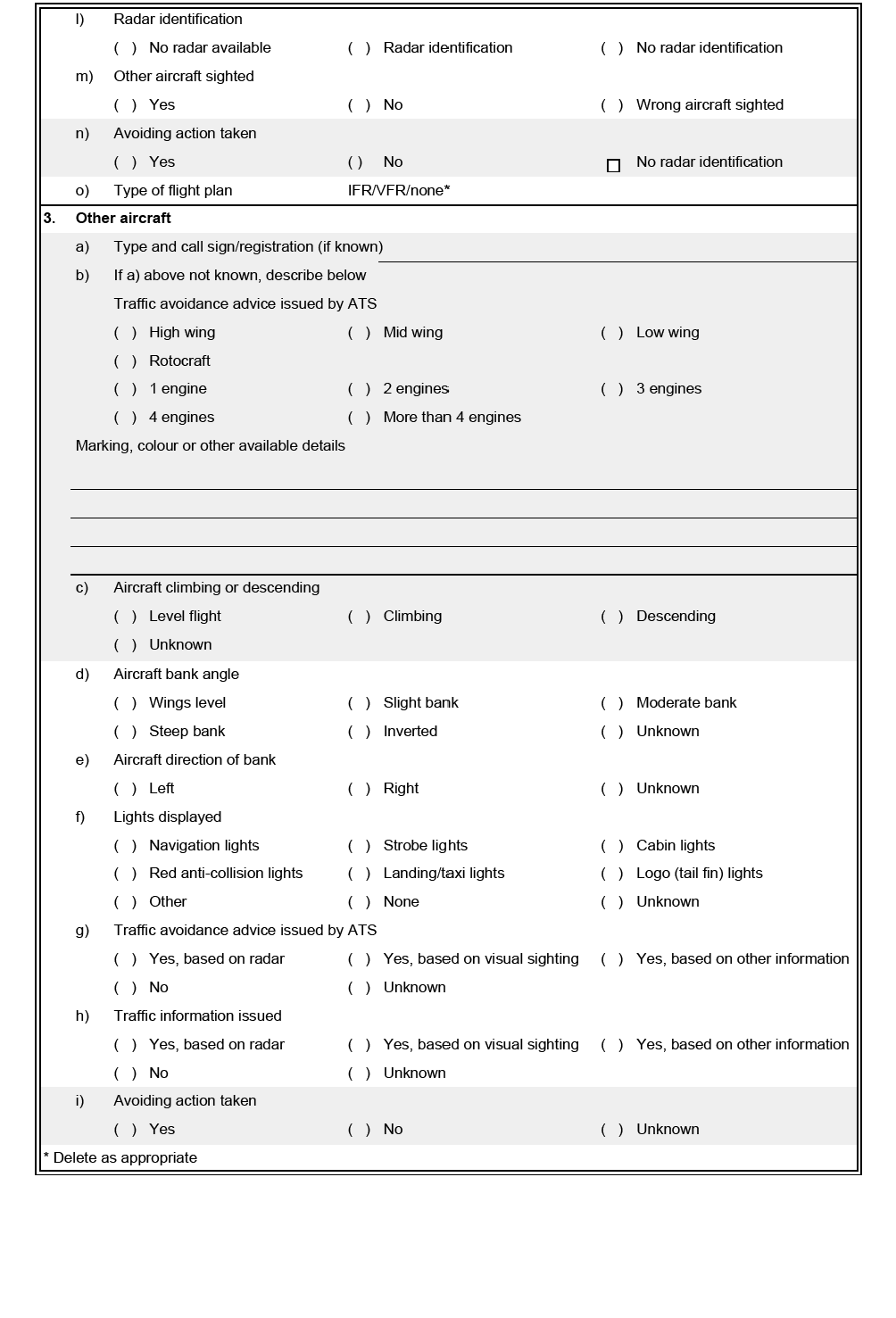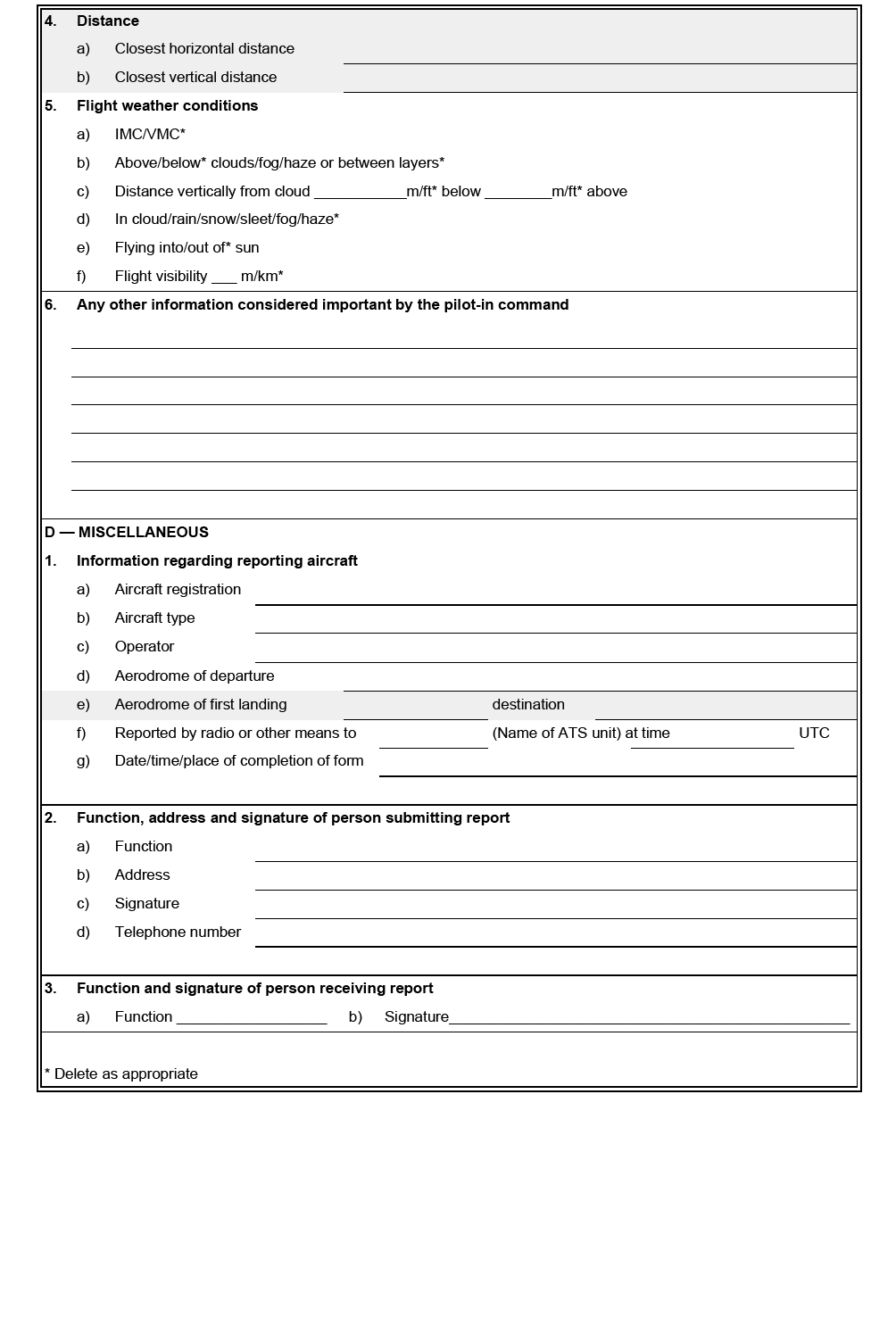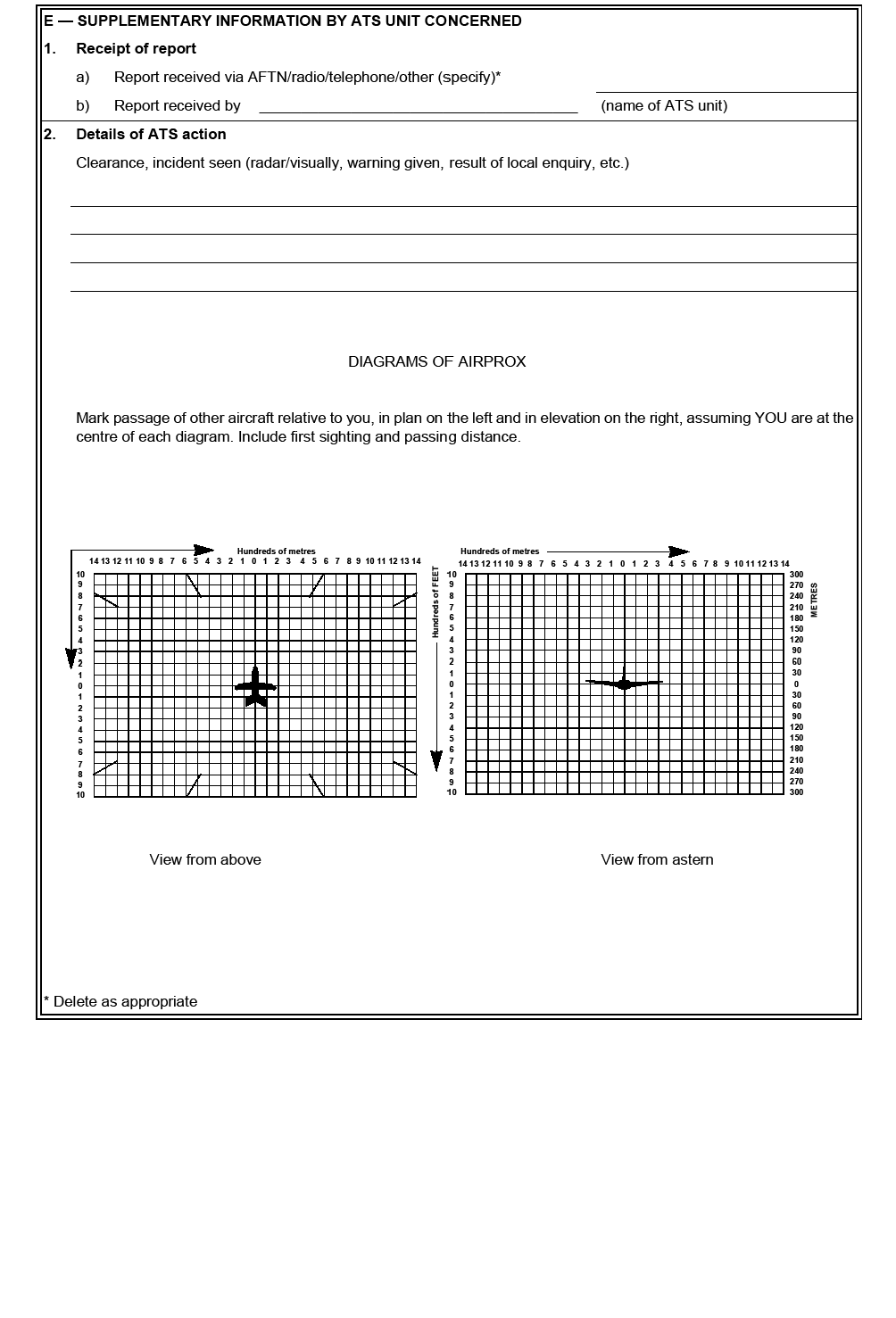ENR 1.14 AIR TRAFFIC INCIDENTS
1.14.1 Definition Of Air Traffic Incidents
-
aircraft proximity (AIRPROX);
-
serious difficulty resulting in a hazard to aircraft caused, for example, by:
-
faulty procedures;
-
non-compliance with procedures; or
-
failure of ground facilities.
-
1.14.1.1.1 Definitions for aircraft proximity (AIRPROX).
-
Aircraft Proximity. A situation in which, in the opinion of the pilot or the air traffic services personnel, the distance between aircraft, as well as their relative positions and speed, has been such that the safety of the aircraft involved may have been compromised. Aircraft proximity is classified as follows:
-
Risk of collision. The risk classification of aircraft proximity in which serious risk of collision has existed.
-
Safety not assured. The risk classification of aircraft proximity in which the safety of the aircraft may have been compromised.
-
No risk of collision. The risk classification of aircraft proximity in which no risk of collision has existed.
-
Risk not determined. The risk classification of aircraft proximity in which insufficient information was available to determine the risk involved, or inconclusive or conflicting evidence precluded such determination.
-
-
AIRPROX.The code word used in air traffic incident report to designate aircraft proximity.
-
ATSP or Other Ground Organisation
-
abnormal function or operation of radio communication or navigational aids, faulty organisation or procedure;
-
personal negligence, incompetence, error or misapplication of procedures or instructions.
-
-
Flight Crew - negligence, incompetence, error of judgement, misapplication of procedures or failure to comply with procedures or instructions.
-
Aircraft - defects in the aircraft or its equipment.
-
Adverse meteorological conditions.
| Type | Designation |
|---|---|
| Air traffic incident | Incident |
|
as 1.4.1.1 a) above as 1.4.1.1 b) i) and ii) above as 1.4.1.1 b) iii) above |
AIRPROX (aircraft proximity) Procedure Facility |
1.14.2 Use Of Online Incident Reporting System
-
by a pilot for filing a report on an air traffic incident after arrival or for confirming a report made initially by radio during flight.
Note: - The form, if available on board, may also be of use in providing a pattern for making the initial report in flight.
-
by an ATS unit for recording an air traffic incident report received by radio, telephone or teleprinter.
Note: - The form may be used as the format for the text of a message to be transmitted over the AFS network.
https://safetyreporting.caam.gov.my
1.14.3 Reporting Procedures (Including In-Flight Procedures)
during flight, use the appropriate air/ground frequency for reporting an incident of major significance, particularly if it involves other aircraft, so as to permit the facts to be ascertained immediately;
as promptly as possible, after landing, submit through CAReS portal:
for confirming a report of an incident made initially as in 1.14.3.1 a) above, or for making the initial report on such an incident if it had not been possible to report it by radio;
for reporting an incident which did not require immediate notification at the time of occurrence.
type of incident,e.g.AIRPROX;
callsign of aircraft making report;
aircraft position, heading or route;
FL, altitude or height;
time of occurrence in UTC;
description of other aircraft, if relevant.
categorised as mandatory occurrence reporting (MOR) shall be submitted through CAReS portal not later than 48 hours from the date of occurrence;
other than MOR shall be submitted through CAReS portal not later than 30 days from the date of occurrence.
Civil Aviation Authority of Malaysia
Air Traffic Management
Level 4, Podium Block B,
No. 27, Persiaran Perdana,
Precinct 4,
62618 Putrajaya,
Malaysia.
Tel: (+60) 3 - 88714000
Fax: (+60) 3 - 88810530
AFS: WMKKYAYS
The pilot should complete the Air Traffic Incident Report Form, supplementing the details of the initial reports as necessary.
Note: Where there is no ATS Flight Information Service, the report may be submitted to the nearest ATS unit.
1.14.4 PURPOSE OF INCIDENT REPORTING




Instruction for the completion of the Air Traffic Incident Report Form
Item
A Aircraft identification of the aircraft filing the report.
B An AIRPROX report should be filed immediately by radio.
C1 Date/time UTC and position in bearing and distance from a navigation aid or in LAT/LONG.
C2 Information regarding aircraft filing the report, tick as necessary.
C2 c) E.g. FL 350/1013 hPa or 2,500 ft/QNH 1007 hPa or 1,200 ft/QFE 998 hPa.
C3 Information regarding the other aircraft involved.
C4 Passing distance - state units used.
C6 Attach additional papers as required. The diagrams may be used to show aircraft's positions.
D1 f) State name of ATS unit and date/time in UTC.
D1 g) Date and time in UTC.
E2 Include details of ATS unit such as service provided, radiotelephony frequency, SSR Codes assigned and altimeter setting. Use diagram to show the aircraft's position and attach additional papers as required.